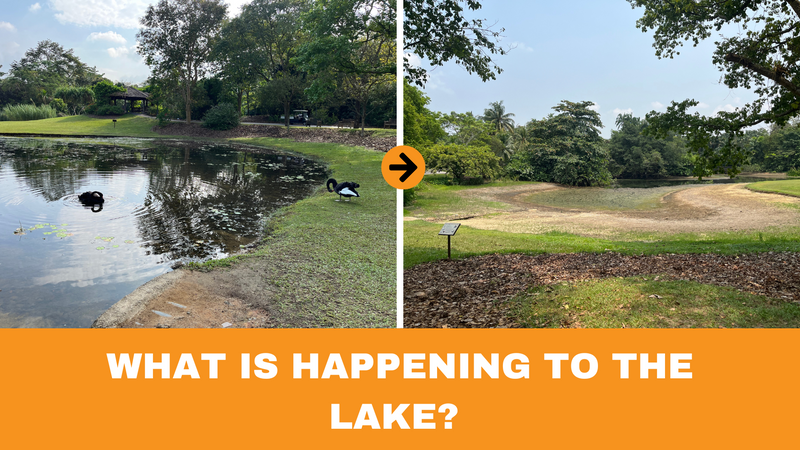We are gathered here today to answer a question that has crossed the minds of every NUS Law student who has walked through the Botanic Gardens this semester on their way to class: What is going on with the lake?
Lake? What lake?
Year 1s: Believe it or not, the algae-infested puddle that you pass by every day from Botanic Gardens MRT station to Bukit Timah Campus (BTC) was once a lake, an ecosystem teeming with biodiversity.
Located near the Botanic Gardens’ Bukit Timah Entrance, the lake is known officially as the Eco-Lake (Author’s note: I didn’t know the lake had an official name until I started researching for this article). For most, the lake’s main claim to fame is its family of black swans, who can occasionally be spotted waddling along its shores and generally basking in the attention of excited tourists, expats and law students. Besides the swans, the lake is also home to other important plant and animal species.
Overall, it is a pretty idyllic picnic spot, described by the Singapore Botanic Gardens website in the following terms: ‘peaceful’, ‘a beautiful setting coupled with a soft and natural atmosphere’ and ‘an ideal place to wind down after a long day.’
Or at least it used to be. Since mid-August, I have noticed with mounting apprehension that the only thing that can be spotted ‘winding down’ around the Eco Lake is its water level, which has receded further and further inland to reveal mud and dry grass. Parts of the dried-up lakebed appear to have been recolonised by grass, almost threatening to transform the lake into a new football pitch. The changes have left the wooden benches which surround the lake’s original perimeter in a somewhat awkward position.
What remains of the water body is covered in an unattractive algal bloom. When I walked closer towards it last Thursday to get a better photo of the lake’s current state, I noticed a bewildered dragonfly repeatedly circling a patch of grass which used to be part of the lake, almost as if it shared my confusion (ok fine, maybe I’m just projecting).
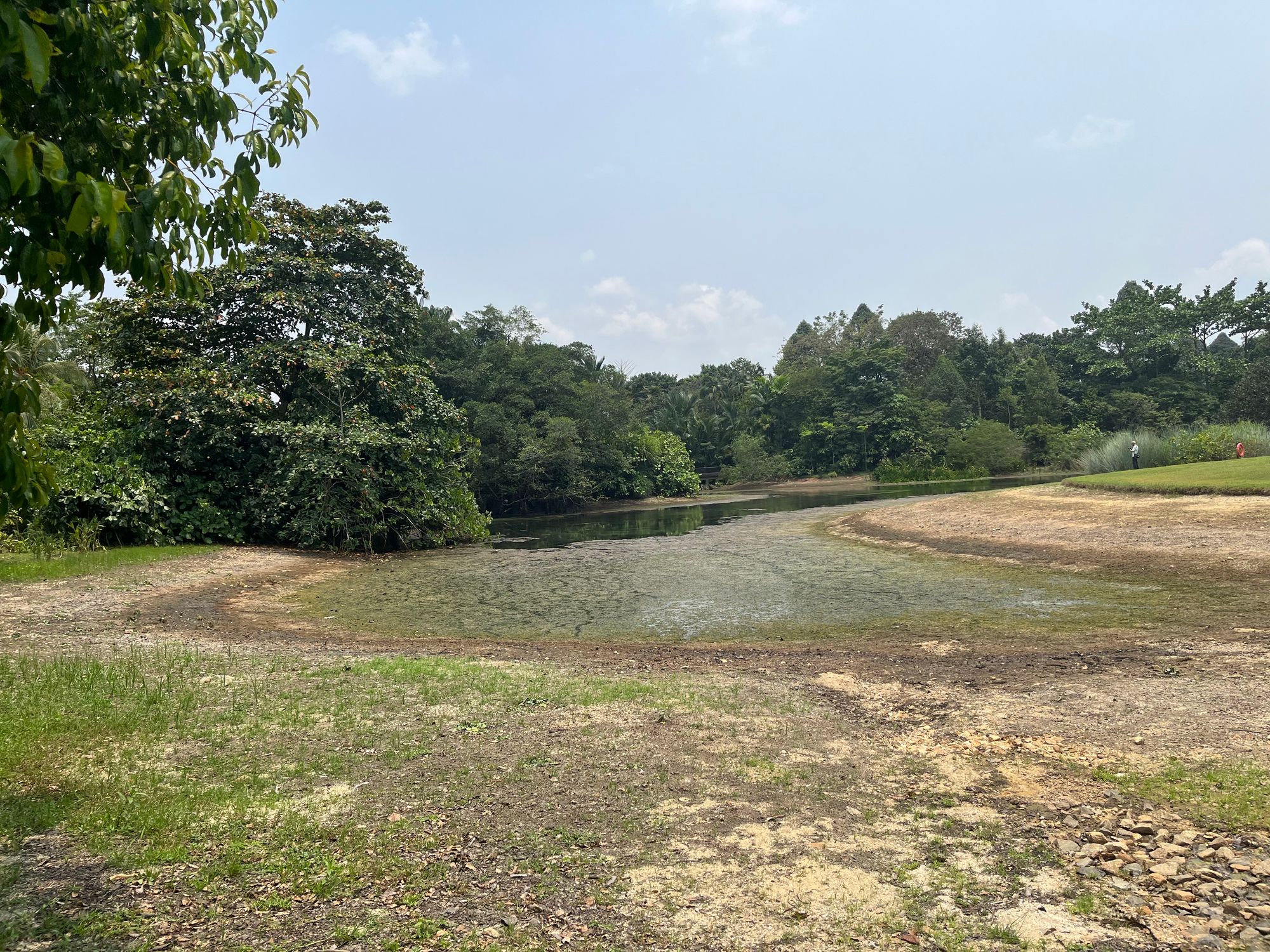
What happened here?
Initial theories
Theory #1: Unfortunate casualty of anthropomorphic climate change
My first reaction was to blame climate change. From my experience, this is usually a satisfactory explanation for most, if not all, undesirable natural phenomena arising in the past century.
Crackpot rating: ★☆☆☆☆
Theory #2: Reclamation for alternative purposes (???)
However, the lake’s rapid decline and the eerie absence of life in the receded portions (minus my poor dragonfly friend) made me wonder if human activity could have played a more direct role in the lake’s draining.
In other words, could the drying of the Eco Lake reflect an intentional decision on the part of NParks to reclaim and use the space for other purposes?
Crackpot rating: ★★★★☆
The answer
I decided to write to NParks in search of answers.


About a week later, I received a response from Singapore Botanic Gardens Visitor Services.
Theory #2 was swiftly debunked :(. In short, NParks is aware of the low lake levels and is continuing to monitor the situation.
According to NParks, the water level at the Eco-Lake is known to fluctuate with weather conditions. In this case, it has temporarily receded due to the recent dry weather. This is not a cause for alarm as the lake is filled by rainwater from the surrounding catchment and generally refills quickly after heavy downpours.
In fact, this is not the first time that this has happened to the Eco Lake. A Mothership article from August 2019 featured a similar incident, blaming a dry spell with below average rainfall and maximum daily temperatures ranging between 31.9°C and 34.5°C for the shrunken lake.
Basically, this suggests that the lake’s current condition is not permanent and the Eco-Lake will (hopefully) bounce back once the dry spell abates.
Of course, this also raises more questions. As my seminar classmate pointed out when I related this explanation to him: "But it rained last night. How come this morning, the lake was even drier?"
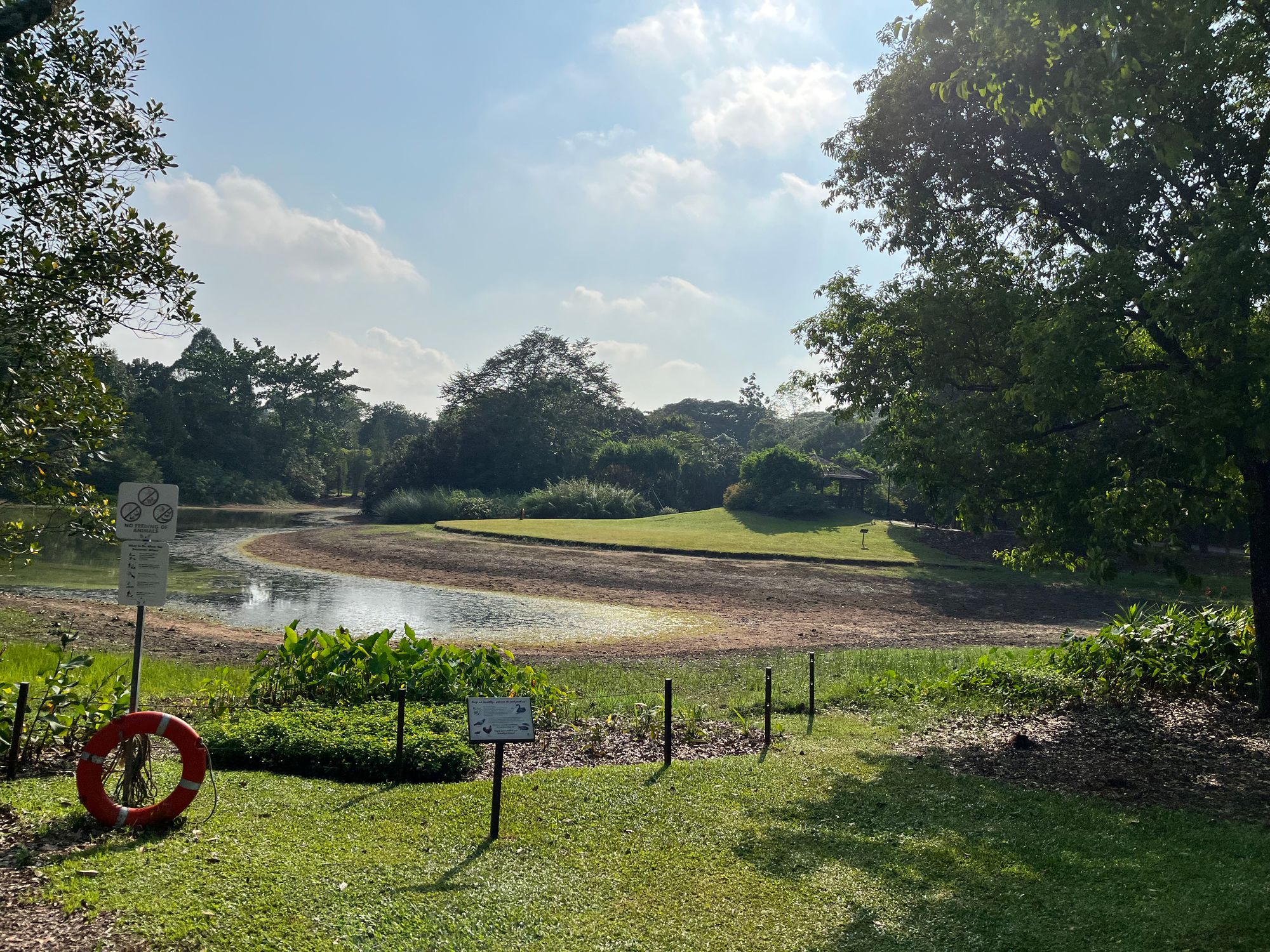
It is true that the continuing decline of the lake despite the occasional thunderstorm here and there does seem like there may be renewed cause for concern. Indeed, according to Metereological Service Singapore's fortnightly forecast and review, most parts of Singapore recorded above average rainfall in September 2023. Wouldn't this have been sufficient to end the dry spell?

However, closer scrutiny of the rainfall anomaly map also shows that rainfall distribution was uneven across Singapore.
Moreover, the weather forecast for the first two weeks of October suggests that the showers are expected to be mostly of a short duration. Therefore even though there has been some rainfall, perhaps this has not been of a sufficient volume to raise the water level of the lake.
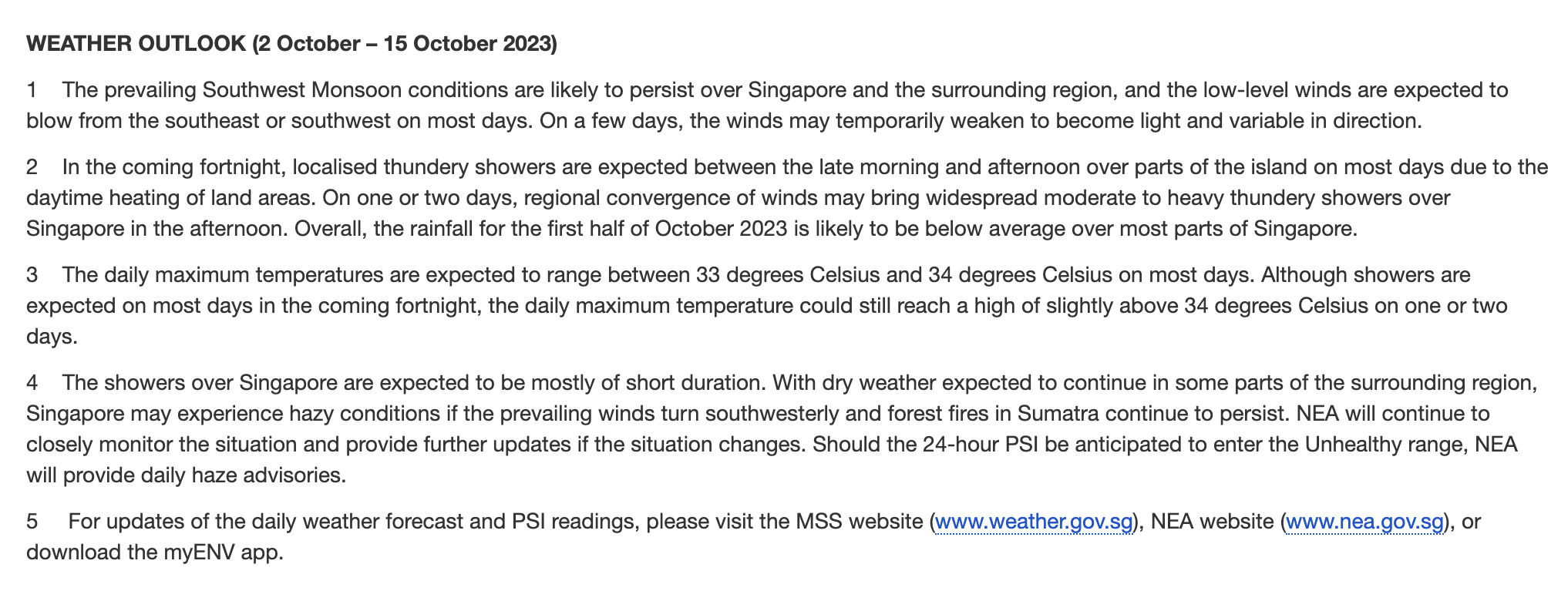
Another question: What happened to the wildlife that used to live in the parts of the lakebed that have dried up? Could the fishes, sensing the danger, have migrated to other lakes? Is the Eco-Lake connected to other bodies of water such as the Botanic Gardens Swan Lake?
I don't really have an answer for that. However, based on publicly available map data from Google Maps, it seems that the Eco-Lake is not connected to other lakes in the Botanic Gardens.
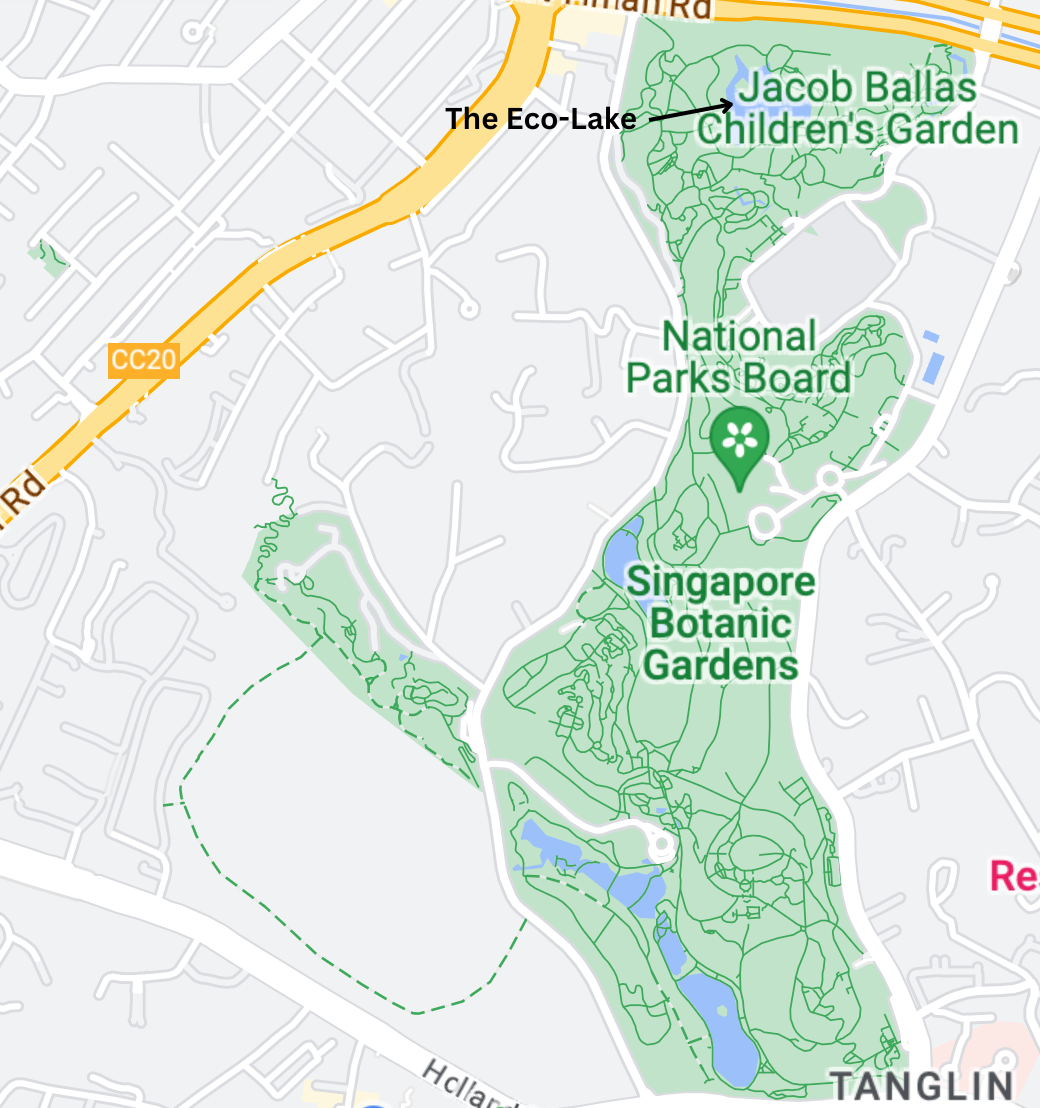
What can we do?
NParks also informed me in their email that to preserve the habitat of the lake, it urges the public to stick to the natural boundaries of the lake and not to wander into the dried areas of the Eco-Lake during this period.
If you see visitors to the Botanic Gardens ‘exploring’ the new banks of the Eco-Lake out of curiosity, you can explain the situation to them and politely request for them to refrain from doing so, lest their intrepid investigations lead to more lasting damage of the lakebed. This could potentially impede the lake's recovery, even in a future abundance of rainfall.
Final thoughts and musings
I’ve been walking through the Botanic Gardens to get to school for two and a half years. But until it disappeared this summer, I never realised how much of a role the Eco-Lake played in lifting my spirits on the otherwise mundane walk to school (even on the days when there were no swans or otters present).
When you’re racing to get to class and make the 11-minute walk in five, it’s easier to gloss over the green. To move on autopilot, even if that means sacrificing the journey for the destination (and when that destination is the LT, it is this author’s opinion that the sacrifice is simply not worth it).
Amid the hustle and bustle of law school, let’s not forget - once in a while - to stop and smell the flowers.

